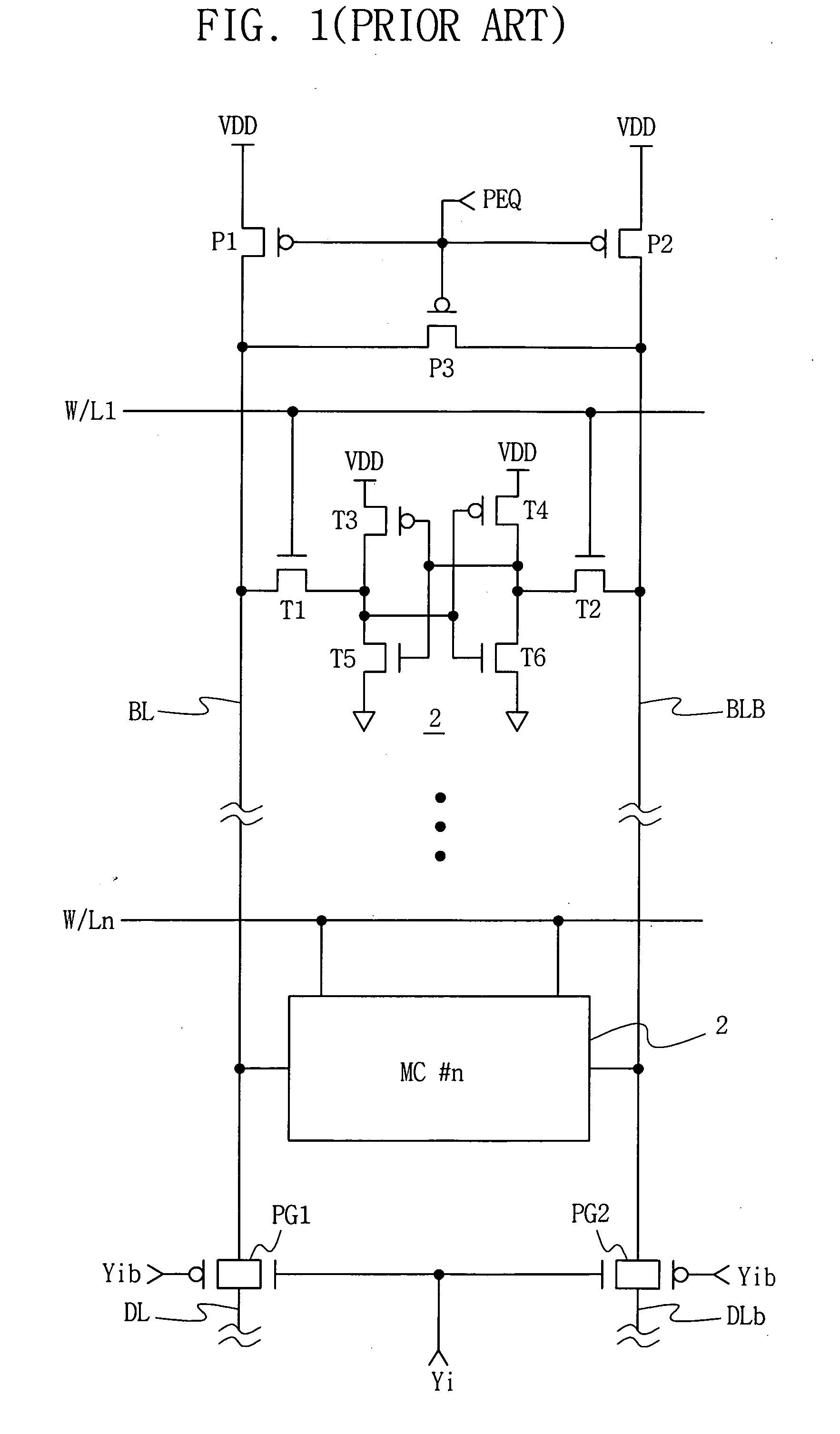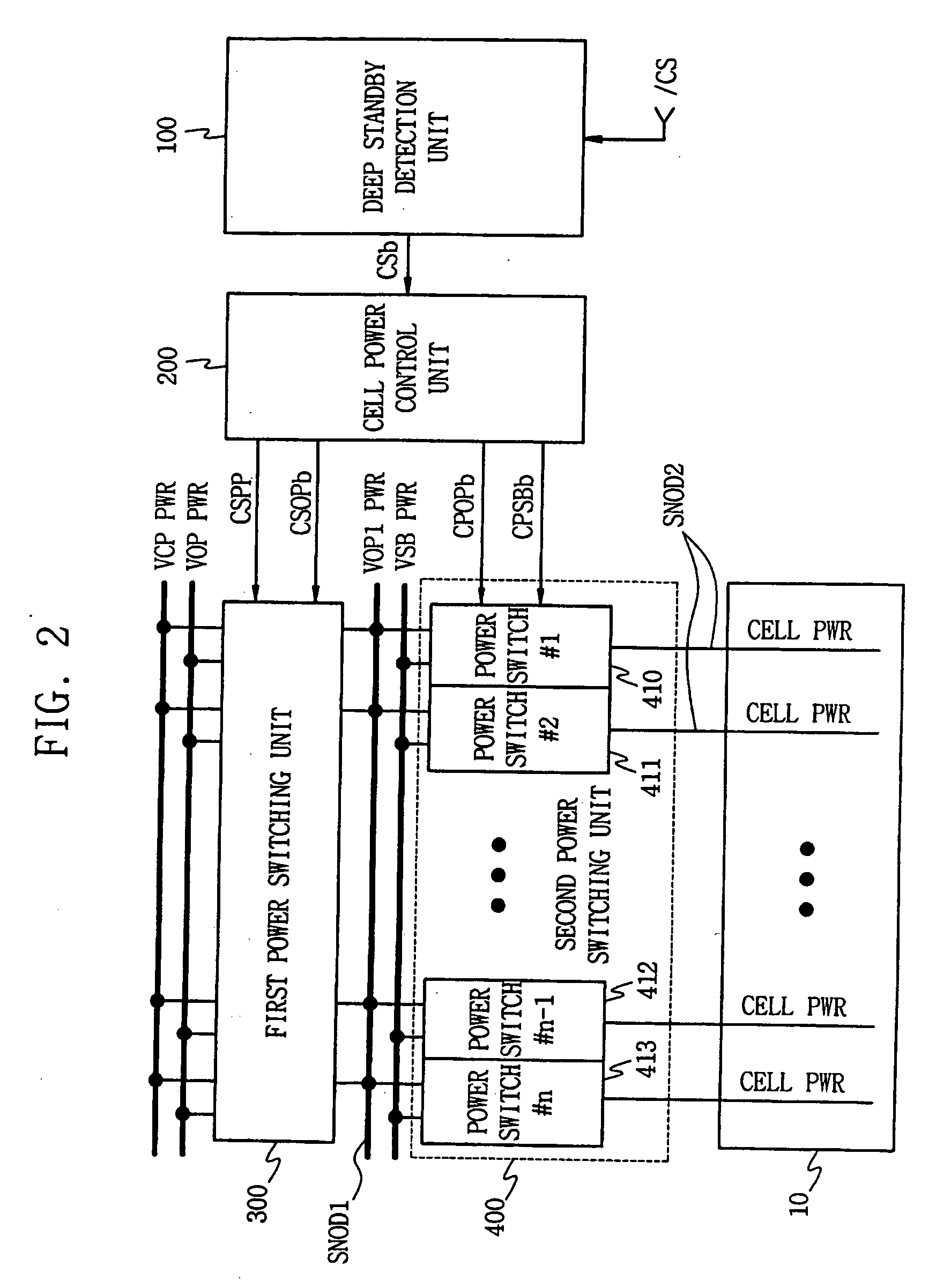Memory cell power switching circuit in semiconductor memory device and method for applying memory cell power voltage
a technology of memory cell and switching circuit, which is applied in the direction of digital storage, pipes, instruments, etc., can solve the problems of deteriorating prior art is not optimal for employment in several fields, and the current characteristic of memory devices may be deteriorated, so as to reduce standby current, shorten wake-up time, and suppress leakage current
- Summary
- Abstract
- Description
- Claims
- Application Information
AI Technical Summary
Benefits of technology
Problems solved by technology
Method used
Image
Examples
first embodiment
[0045]FIG. 2 is a block diagram of a memory cell power switching circuit according to the present invention. In FIG. 2, a dual power mode switching structure used for controlling memory cell power in a memory cell is schematically shown. The memory cell power switching circuit of FIG. 2 can be formed on a semiconductor memory device chip.
[0046] Referring to FIG. 2, the circuit includes a deep standby detection unit 100, a cell power control unit 200, a first power switching unit 300, a second power switching unit 400, and a memory cell array 10.
[0047] The first power switching unit 300 selectively outputs one of an operation voltage VOP PWR or a high power supply voltage VCP PWR (higher than the operation voltage VOP PWR) to a first switching output stage SNOD1 in response to first switch control signals CSPP and CSOPb, respectively, applied by the cell power control unit 200.
[0048] The second power switching unit 400 includes a plurality of power switches 410 to 413 for selective...
second embodiment
[0058]FIG. 4 is a block diagram of a memory cell power switching circuit according to the present invention. Referring to FIG. 4, a memory cell power switching block 500 is a dual mode power switching structure, and includes a memory cell power control unit 200, a first power switching unit 300, and a second power switching unit 400), is operatively integrated with a memory cell array 10 (similarly as shown in FIG. 2). Further, in FIG. 4, the cell power switching circuit comprises a dual mode power switching structure (each comprised of a memory cell power switching block 500) connected at each end of the memory cell array 10 so that the cell power applying operation as described with reference to FIG. 3 is performed (mirrored) at both ends of the memory cell array 10, thereby resulting in a shorter wake-up time.
[0059] Similarly, FIG. 5 shows a block diagram of a cell power switching circuit according to a third exemplary embodiment of the present invention. In the case of FIG. 5, t...
PUM
 Login to View More
Login to View More Abstract
Description
Claims
Application Information
 Login to View More
Login to View More - R&D
- Intellectual Property
- Life Sciences
- Materials
- Tech Scout
- Unparalleled Data Quality
- Higher Quality Content
- 60% Fewer Hallucinations
Browse by: Latest US Patents, China's latest patents, Technical Efficacy Thesaurus, Application Domain, Technology Topic, Popular Technical Reports.
© 2025 PatSnap. All rights reserved.Legal|Privacy policy|Modern Slavery Act Transparency Statement|Sitemap|About US| Contact US: help@patsnap.com



